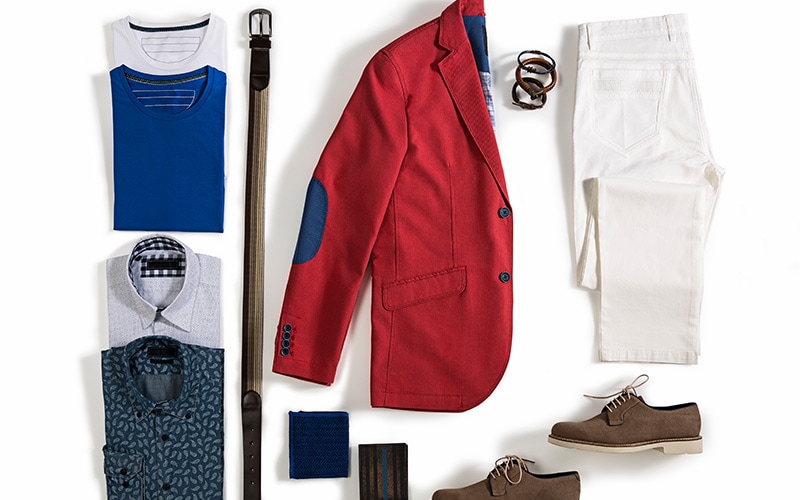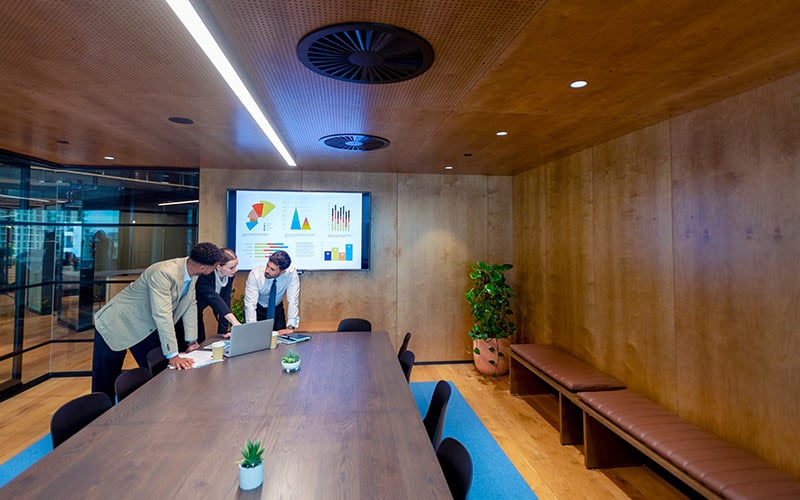
Executive summary
Things are looking up for the retail sector in 2025. Inflation is receding and interest rates are stabilizing. But the retail industry is operating in a challenging environment related to geopolitical conflicts and climate change that presents both growth potential and limited capacity.
Companies are increasingly looking for ways to transform strategically and gain a competitive edge. One of the most effective ways they are doing this is through mergers and acquisitions (M&As).
As a result, M&As are increasing this year. In terms of regulations, retail companies must balance uncertainty surrounding the new US administration’s policies while maintaining their sourcing strategies and reacting accordingly to tariffs.
Innovations boost engagement
Innovations in technologies, from artificial intelligence (AI) to augmented reality (AR), are helping retailers engage their customers better, achieve cost reductions, and streamline processes. Online sales will be a dominating factor affecting global sales growth, with online retailers tending to have better offers than brick-and-mortar stores.
Retailers are also aiming to standardize experiences for consumers across all retail channels and offer them a consistent experience across touchpoints, employing composable commerce. Apart from having online stores and physical stores, it might help retailers to have high-margin, fast-growing segments that offer cloud services, and advertising businesses to differentiate themselves from their competitors. Amazon was able to beat Walmart in sales last quarter for the first time ever, owing to these aspects.
With employee attrition being one of the biggest challenges in this industry, retailers will have to strategize and take active measures to keep their talent intact.
Apart from having online stores and physical stores, it might help retailers to have high-margin, fast-growing segments that offer cloud services, and advertising businesses to differentiate themselves

Financial insights
The retail industry is poised for growth in 2025. Executives anticipate it will experience moderate growth this year, owing to strategies such as enhanced loyalty programs, strengthened digital commerce, and improved omnichannel experiences focused on delivering a seamless customer journey. That said, the sector must navigate a complex landscape of economic pressures and shifting consumer behaviors. Success will likely depend on strategic investments in technology, supply chain optimization, and efforts to enhance the overall customer experience.
Market size and CAGR
The retail industry is projected to reach a market size of $35.2 trillion in 2025 and expand at a compound annual growth rate (CAGR) of 7.65%, reaching approximately $50.8 trillion by 2030. Key drivers include a growing emphasis on personalized user experiences, advancements in technology, strategic collaborations and partnerships among industry leaders, and the growth of e-commerce.
Global sales growth
Total retail sales globally in 2025 are forecast to be $24.9 trillion, with almost one-fifth of that likely to come from online retail sales. Close to two-thirds of that will come from China and the US, which, together with India, are projected to be the world's largest retail markets, driven by increasing consumer spending power.
The retail volume growth in countries in Asia and the Gulf is expected to be faster compared to other regions, due to their large young consumer populations, increasing incomes, rapid urbanization, and the expanding popularity of online shopping, as per a report from The Economist. In the US, retail giants such as Walmart, Amazon, and Costco continue to dominate, accounting for a substantial share of retail sales due to their popular membership programs and offering good quality products at reasonable prices.
Ad spending
The retail sector is increasing its investment in advertising, particularly in digital and retail media channels, as companies aim to enhance customer engagement and drive sales. In 2025, the retail sector is anticipated to maintain its leading position in digital advertising expenditure. Projections indicate that US retail digital ad spending will experience a resurgence, with growth rates accelerating in 2025 and 2026 after a moderate phase in 2024. Retail is expected to invest more in display ads on social networks more than any other industry, and also to increase spend on video advertising.
The retail volume growth in countries in Asia and the Gulf is expected to be faster compared to other regions due to their large young consumer populations and rising incomes
Industry dynamics
Retailers have been grappling with rising expenses, evolving technology requirements, and geopolitical uncertainties, while also adjusting to constantly changing consumer preferences and economic factors.
Following a peak of 9.4% year-on-year in the third quarter of 2022, the IMF forecasts that headline inflation will decrease to 3.5% by the end of 2025, just under the average rate observed in the two decades prior to the pandemic. Further, it predicts that reduced interest rates in major economies will alleviate pressure on emerging markets, leading to a stronger currency against the US dollar and improved financial conditions. This will bring about a wave of cautious optimism among consumers in 2025. As their purchasing power improves, so will retail volumes.
Mergers and acquisitions
A recent survey of 1,200 CEOs around the world indicates that 56% of respondents expect to actively pursue M&As in 2025 after the US election that returned President Trump to the White House, a notable increase from the 37% pre-election.
The retail sector in particular has already witnessed a flurry of M&As, primarily involving distressed brands striving for recovery. For instance, American Exchange Group acquired Urban Skin Rx, while fashion retailer Laura Ashley was acquired by Marquee Brands. Meanwhile, luxury fashion brand Stella McCartney has bought back the stake that LVMH owned in the company. Moreover, Vera Wang sold the intellectual property of the brand to WHP Global to expand geographically, and JCPenney and SPARC Group brands have come together to create Catalyst Brands, bringing names including Aéropostale, Brooks Brothers, Eddie Bauer, and JCPenney's private brands under one umbrella. This is aimed at further growing the brands involved and is being hailed as one of the biggest deals in recent times.
Regulatory changes
The uncertainty around US President Donald Trump's recent imposition of tariffs is significantly impacting the retail sector. The president has imposed – and then suspended – some tariffs on Canada and Mexico, as well as imposing swingeing tariffs on goods from China. These tariffs mean increased costs for a wide range of products, including everyday essentials such as groceries and automobiles. Industry leaders have expressed concerns that these added expenses will ultimately be passed on to consumers, leading to higher prices. Other nations are concerned about how they will be impacted. How it pans out remains to be seen.
The European Union’s General Product Safety Regulation (GPSR) mandates that businesses exporting to the EU have a responsible economic operator within the bloc to handle product issues and consumer queries. This is to ensure safety standards of products and consumer protection for online sales. Manufacturers need to appoint an authorized representative within the EU to act as a contact point for market surveillance authorities. This will require retailers to have better risk assessments in place for their products to ensure their quality.
Talent management
Retail is one of the industries with the highest employee turnover rates. The reasons for attrition range from workplace flexibility — a top reason — to career development, health and wellbeing, compensation, and meaningful work, especially for frontline workers.
Companies can explore ways to reduce labor shortages and encourage workers to stay, as well as reduce staff costs by introducing flexible hours, choice of outlets as work locations, and part-time arrangements. Talent analytics software, which helps companies identify issues, create solutions, match employees to the right roles, and enhance employee engagement, can help reduce attrition.
Retailers must also make sure that their customer-facing employees can work seamlessly and effectively with both in-store physical systems as well as digital technology to serve customers with their needs equally well. This will also contribute to a consistently good and unified retail experience for the customer.
Sustainability investment
Retailers account for more than 25% of global emissions, and a study shows that 56% are developing new climate-friendly products or services.
Sustainability efforts on the part of retailers impact the purchase decisions of consumers. A study has shown that 44% consumers globally are more inclined to buy from a company committed to sustainability, and 22% intend to make more mindful purchasing decisions, prioritizing eco-friendly products and transparent business practices. This makes it even more critical for retailers to invest in sustainability. Top retailers such as Amazon and IKEA have set goals to source their electricity from renewable sources, and are investing in solar and wind energy.
Brands are leaning into circular retail. The North Face’s Renewed initiative collects used clothing and gives customers small discounts on new purchases. The used items are turned into carpet padding, stuffing for toys, and fibers for new clothing. Brands are also being innovative in their quest for sustainability. Ganni is designing clothes made from bacteria-grown leather, a leather alternative that is synthetic-free.
Trends
Experiential retail
Retailers have been providing interactive, immersive, and multisensory experiences via pop-up stores, in-store events, or interactive displays to attract and retain customers. For instance, Huda Beauty put up a sci-fi themed pop-up to launch a new eyeshadow palette. Visitors are encouraged to take photos on the throne placed at the venue and post on social media. Prada set up a pop-up space inside Harrods in London recreating its Milan cafe Bar Luce, inviting shoppers to experience the bar.
Return fees
A joint report from the National Retail Federation and Happy Returns shows that the total cost of returns was $890 billion in 2024 — a figure that grew threefold in five years — and that 66% of retailers have begun charging a return fee in the past year.
Amazon has introduced a $1 return fee if a customer drops off an item at a UPS store when a Whole Foods or Kohl's is closer to their location. Best Buy has implemented a 15% restocking fee for certain items that have been opened. With retail fraud causing significant losses for the retail sector, this fee could prove to be a deterrent for consumers looking to return items fraudulently as per retail analysts.
In 2024, the retail industry in the US saw total merchandise returns reach $685 billion, with losses from fraudulent and abusive returns and claims amounting to $103 billion, up $2 billion from the previous year. US retailers are also adopting measures like reducing return windows to 30 days or less, and leveraging real-time technology to approve, flag, or reject returns based on customer behavior patterns.
Minimalist lifestyle preference
Minimalism is emerging as a strong trend, especially among millennials, as they find themselves in the middle of paying off student loans, or spending on housing. The priority on saving to pay off student loan debts or combat increasing housing costs is causing them to spend less on materialistic pleasures and also be more mindful of the effect of their purchases on the environment. It has translated into them creating capsule wardrobes, reselling clothes or thrifting, and buying from brands that are environmentally conscious. The capsule wardrobe market, valued at $1.3 billion in 2023, is expected to double to $2.6 billion by 2030, growing at a CAGR of 10.5% from 2024 to 2030. This growth is driven by rising consumer awareness of sustainable fashion, the growing popularity of minimalism, and increasing global demand for high-quality, multifunctional apparel. Brands such as J.Crew, Mansur Gavriel, and Coach also have resale programs that allow consumers to resell their used purchases from those brands to other customers, or trade them with the brand itself for store credit.
Anti-aging products
The anti-aging market size is set to grow from $58.5 billion in 2024 to $63.2 billion in 2025, at a 8.1% CAGR. This can be attributed to rises in disposable income and growing awareness and acceptance of antiaging products and services among Gen X, Gen Y, and Gen Z globally. A new development is the reduced age of the audiences using them — Gen Z and Gen Alpha are drawn to these products in an attempt for “preventative” aging. They are emerging as influential beauty consumers, with their spending power projected to reach $5.5 trillion by 2029. These consumers are hugely influenced by social media such as Instagram and TikTok, and the viral trends they spark, such as glass skin and the 10-step K-beauty regime. This in turn has given rise to the Sephora kids phenomenon, referring to children seen at Sephora stores trying on products that aren’t appropriate for their age.
Another trend is that of products that combine beauty with health or aesthetics, spurred by consumer preference for noninvasive or minimally invasive treatments.
Businesses are increasingly relying on shoppable posts on platforms like Instagram and Pinterest — which let customers make purchases directly from the posts — as a key strategy to drive online sales
Brand collaborations
Retailers are realizing the value of brand collaborations and tying up with other retailers to jointly engage customers, especially when the brands’ values are similar. For example, premium mattress brand Leesa collaborated with West Elm to create products made with material that is sustainably sourced. Gap collaborated with Madhappy to launch a limited-edition collection of clothing and accessories, while Dunkin and Scrub Daddy partnered to bring out a collection of donut-shaped scrubbers. Such collaborations can help brands engage audiences and reach new customers by tapping into the other’s customer base.
Influence of social commerce
Research indicates that social commerce will account for 17% of global e-commerce transactions this year, expected to grow in coming years. The social commerce sales in 2025 are projected to be $821 billion from the $699 billion recorded in 2024.
Businesses are increasingly relying on shoppable posts on platforms like Instagram and Pinterest — which let customers make purchases directly from the posts — as a key strategy to drive online sales. TikTok Shop remains a favorite among consumers, integrating shopping links into short videos, live streams, and profiles. This format not only enhances engagement but also lets brands sell their products directly on the platform and provides influencers with opportunities to monetize their content.
Technology outlook
Artificial intelligence
Advances in AI, particularly generative AI, are helping retailers move beyond the early stages of using the technology and use it to their advantage, from content creation for their e-commerce sites and managing marketing campaigns to customer service. According to Infosys’s CMO Radar research, marketing leaders in retail are integrating AI extensively rather than in isolated areas — 61% of respondents report implementing AI across five to seven marketing activities (Figure 1). The areas that they use it in the most include campaign management, personalization, and content creation (Figure 2). Brands are also opening in-house production studios to have better control over their content, ensure alignment with branding, and for cost efficiency.
Figure 1. Most marketers have deployed AI in five or more marketing activities
Source: Infosys Knowledge Institute
Figure 2. Marketing activities where AI is used significantly
Source: Infosys Knowledge Institute
Retail CMOs anticipate that AI initiatives will drive the most impact in efficiency, speed to market, and productivity over the next 18 months (Figure 3). These areas have already delivered benefits, including cost reductions, and streamlined processes.
Figure 3. Retail CMOs expect efficiency to get biggest boost from AI in next 18 months
Source: Infosys Knowledge Institute
Major retailers such as Lowe’s and CVS have leveraged AI in areas such as predictive maintenance alerts and enhanced app-based services, improving operational efficiency and customer experience, and driving traffic and sales. Wendy's plans to expand its use of AI after it was able to use generative AI to reduce wait time by 22 seconds at drive-through restaurants. Brands also use AI for dynamic pricing. For example, Amazon uses AI-driven insights to adjust its product prices multiple times a day, influenced by aspects such as competitor pricing, demand, and product availability. Retailers can reduce excess inventory by 40% and improve forecasting accuracy by nearly 50% over manual planning by leveraging custom AI-driven forecasting models.
Naveen Krishna, principal consultant, digital experience at Infosys, says: “Infosys helped a wellness retailer craft hyper-personalized shopping experiences for visitors to its e-commerce site. It utilized an AI-driven solution to help the brand derive customer insights data to anticipate customer needs and facilitate personalized product recommendations in real time.” He adds: “The solution — tailored for an omnichannel approach — created seamless interactions for customers across online and in-store channels by allowing them to search for products through the brand’s mobile app and purchase them in-store. By providing enhanced visibility of store inventory to the brand, it helped plan better availability of products, and enabled prompt online order fulfillment and faster delivery, based on proximity to the store. This helped the brand acquire 15 million new customers.”
In another case, Infosys helped a global personal care and cosmetics company gather and analyze data across multiple marketplaces it is part of, using an AI-driven e-retail analytics solution. This led to a 37% increment in glance views for products and a 30% increase in conversion. The solution facilitated reduced chargebacks, helped monitor fill rates, and generated automated insights to help gain digital shelf space.
Agentic AI is making waves in the AI world, as these systems have a degree of autonomy, are adaptive learners, and make quick and complex decisions without human oversight. Retailers like Natuzzi and Gardens Alive are starting to deploy agentic AI not just for app development, or information security, but for key retail functions such as shopping experiences and in-store operations, in the form of conversational assistants for customers, or store operations agents who arm employees with readily available information to quickly and easily share with customers.
"Customers are no longer thinking about separate physical and digital channels. Instead, they want access to a single, unified experience that consistently travels with them across store, website, social media, and/or a mobile app,” says Ravinder Vanam, senior director in the consumer goods, retail, and logistics division at Infosys. “This trend is leading retail companies to invest in the right technology such as AI and ML models, to automate tasks for their employees or enhance their efficiency especially when stores are becoming fulfillment hubs. This can be achieved by offering data visibility and reducing errors related to demand forecasting and inventory tracking, which cause non-malicious shrinkage from unsold merchandise or pricing errors, leading to revenue leakage."
Augmented reality
Research shows that products presented using AR achieve a 94% higher conversion rate compared to those without AR, and 57% say they are more likely to purchase from a brand if it offers AR experiences. It’s no wonder that AR is being used by retailers for product visualization: For example, IKEA’s AR app lets customers place virtual furniture in a space and visualize what it will look like before buying. LEGO stores use an AR screen that allows customers to visualize what the finished set in 3D will look like before they buy it. Infosys helped a leading diamond jewelry retailer deploy AR on its e-commerce site, with dynamic 3D modeling and spatial reality, which led to a 27% growth in sales on the e-commerce channel. The brand’s online sales conversion increased fourfold.
Brands are also implementing AR-powered virtual try-ons and mobile apps that customers can use to visualize how makeup or clothing will look on them before they buy the item. This can also go a long way in helping customers weed out appealing options from the rest, and could reduce related returns. AR- and AI-powered skin analysis tools that offer a user-friendly experience are also available for brands to use to engage with their customers.
Consumers' growing interest in sustainability will push brands to ensure transparent supply chains and invest in radio frequency identification (RFID) technology for seamless product tracking from source to shelf.
The right architecture
With consumers demanding a consistent shopping experience across channels, retailers are prioritizing omnichannel commerce and unified commerce. Adopting microservices-based, API-first, cloud-native, and headless (MACH) architecture is enabling retailers to transform their e-commerce platforms, optimize operations, build scalable and agile solutions, and deliver personalized customer experiences, particularly in the context of omnichannel commerce. Kunal Puri, vice president of customer success at Infosys Equinox, says: “Composable commerce offers businesses the flexibility and agility to engage with different markets, channel partners, or business models to solve complex commerce needs and use cases across their digital assets — their website or a marketplace they participate in — as well as through omnichannel capabilities be it a store, through social commerce, or voice commerce.”
Infosys Equinox helped a women’s apparel retailer in transitioning from a legacy e-commerce monolithic system to MACH-X architecture (MACH with eXtensibility), enhancing omnichannel experiences and streamlining operations. The retailer was struggling with high costs associated with maintaining an on-premise legacy system, which was hindering innovation and customer experience. Seeking a more flexible, fully responsive e-commerce platform to engage millennials, along with seamless omnichannel content, promotions, inventory, and fulfillment, they adopted Infosys Equinox’s cloud-hosted MACH-X solution. This move led to a 30% reduction in total cost of ownership while providing the agility needed to continuously enhance their digital presence and omnichannel capabilities.
Elsewhere, Infosys helped a Nordic food and health retailer leverage microservices, cloud hosting, and a new agile way of working to solve challenges related to the legacy systems such as inflexibility to integrate new features and slow development speed. The business was divided into autonomous, self-sufficient, interoperable microservices, which resulted in faster time to market and more frequent production delivery, keeping customers abreast of promotions, campaigns, and new products.
Canadian luxury menswear retailer Harry Rosen relied on a composable commerce system and deployed microservices to align its online shopping experience with the personalized service available in stores. By breaking its e-commerce platform into smaller, independent services, the brand was able to efficiently deploy features like personalized product recommendations and centralize loyalty and inventory across online and in-store.

Key takeaways
- The retail sector is fueled by growth related to personalized shopping experiences, technological advancements, strategic partnerships, and the rapid expansion of e-commerce. Strategic takeovers, brand consolidations, and acquisitions of distressed businesses signal an era of industry transformation. Success is driven by loyalty programs, digital commerce, and omnichannel experiences. Strategic technology investments, supply chain optimization, and enhanced customer experience will also play a key role.
- New tariffs, inflation trends, and EU safety regulations pose challenges for retailers. Businesses must adapt to cost pressures, compliance requirements, and shifting consumer sentiment to maintain stability.
- AI is a key force reshaping retail, with companies leveraging the technology for content creation, campaign management, pricing strategies, and operational efficiencies. AI-driven personalization and automation will define the next phase of retail growth. AI-powered insights will help retailers reduce overstocking, minimize markdowns, and improve profitability. Efficient resource management through AI will enhance supply chain efficiency and reduce waste, driving sustainable growth.
- Experiential retail, social commerce, and sustainability drive consumer behavior. From in-store experiences to minimalist lifestyles and resale programs, brands must align with evolving preferences to stay competitive.
- Retailers can work with system integrators who give them the platform capability and help them stitch together pre-built components to address their specific needs for in-store transformation or omnichannel commerce.









